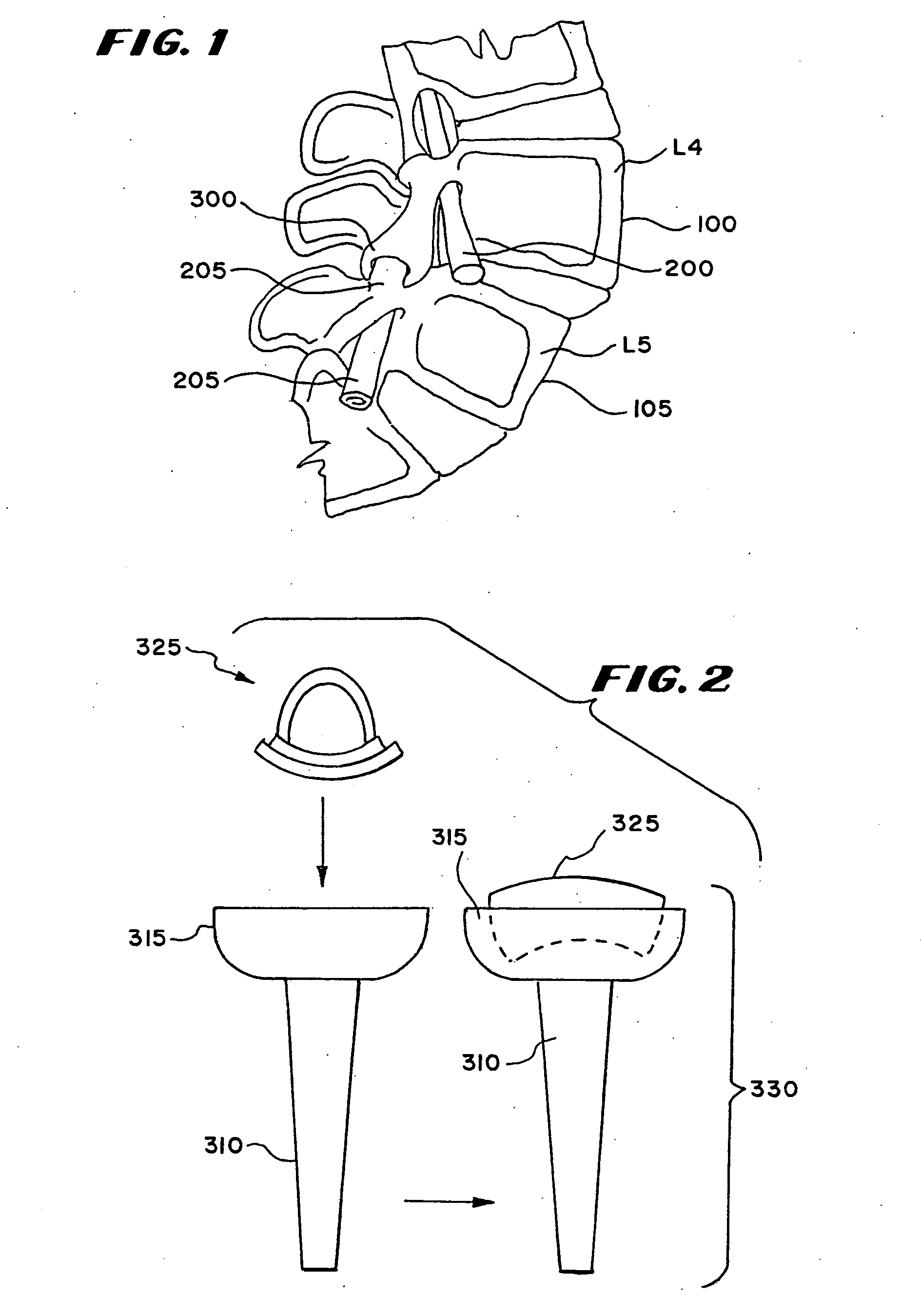Facet arthroplasty devices and methods
a facet arthroplasty and facial arthroplasty technology, applied in the direction of prosthesis, internal osteosynthesis, osteosynthesis devices, etc., can solve the problems of slow fusion rate, arthrodesis poses problems of its own, and the spinal stenosis associated with degenerative spondylolisthesis has not seen good results, so as to facilitate performance
- Summary
- Abstract
- Description
- Claims
- Application Information
AI Technical Summary
Benefits of technology
Problems solved by technology
Method used
Image
Examples
Embodiment Construction
[0064] I. Anatomy of Lumbar Vertebrae
[0065]FIGS. 27 and 28 show the fourth and fifth lumbar vertebrae L4 and L5, respectively, in a lateral view (while in anatomic association) and in a superior view (separately). The lumbar vertebrae (of which there are a total of five) are in the lower back, also called the “small of the back.”
[0066] As is typical with vertebrae, the vertebrae L4 and L5 are separated by an intervertebral disk 25. The configuration of the vertebrae L4 and L5 differ somewhat, but each (like vertebrae in general) includes a vertebral body 10, which is the anterior, massive part of bone that gives strength to the vertebral column and supports body weight. The vertebral arch 12 is posterior to the vertebral body 10 and is formed by the right and left pedicles 14 and lamina 16. The pedicles 14 are short, stout processes that join the vertebral arch 12 to the vertebral body 10. The pedicles 14 project posteriorly to meet two broad flat plates of bone, called the lamina ...
PUM
| Property | Measurement | Unit |
|---|---|---|
| structure | aaaaa | aaaaa |
| stiffness | aaaaa | aaaaa |
| distance | aaaaa | aaaaa |
Abstract
Description
Claims
Application Information
 Login to View More
Login to View More - R&D
- Intellectual Property
- Life Sciences
- Materials
- Tech Scout
- Unparalleled Data Quality
- Higher Quality Content
- 60% Fewer Hallucinations
Browse by: Latest US Patents, China's latest patents, Technical Efficacy Thesaurus, Application Domain, Technology Topic, Popular Technical Reports.
© 2025 PatSnap. All rights reserved.Legal|Privacy policy|Modern Slavery Act Transparency Statement|Sitemap|About US| Contact US: help@patsnap.com



